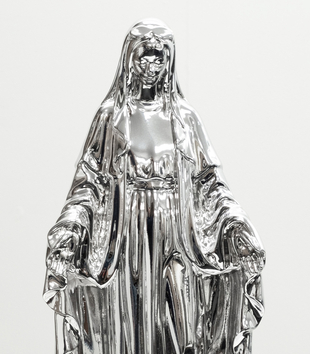MAVCOR Journal
born digital, peer-reviewed
 On the Multiple Lives of Bannerstones: Indigenous North America 6,000 BCE to the Present
On the Multiple Lives of Bannerstones: Indigenous North America 6,000 BCE to the Present
Looking at Indigenous bannerstones from what is known as North America, their unique shapes and symmetrically drilled holes carved from an array of lithics, from sedimentary stone to quartz, I wonder what stories they are telling. Do their stories begin with the sculptors who made them east of the Mississippi Valley in 6,000 BCE or do they begin four billion years ago when volcanic heat from the earth’s core melted and congealed minerals to form the oldest terrestrial rocks?
Beijing's Tibetan Buddhist temples have always been places through which diverse groups of people moved. During the Qing, these were spaces where elites from different backgrounds met, collaborated, and enacted the multicultural character of the empire within the capital. The temples themselves announced the pluralistic nature of the Qing dynasty, as well as its grandeur, through their public display of signs and stelae aimed at the multi-ethnic audiences of the empire.
 In Search of Multiple Colors of Christ: Daniel J. Fleming and the American Protestant Encounter with Asian Christian Visual Arts, 1937-1940
In Search of Multiple Colors of Christ: Daniel J. Fleming and the American Protestant Encounter with Asian Christian Visual Arts, 1937-1940
Fleming’s trilogy illustrates the complex dynamics of race, religion, and visual arts in the interwar United States. Though the extant scholarship highlights the increasing Anglo-Saxonization of Jesus’s body in American visual culture in this era, Fleming’s story reveals a virtually opposite impulse in liberal Protestantism: to search for multiple colors of Christ.
 Like a Virgin? Breaking, (un)making, and replicating the Madonna across time, space, and toy stores
Like a Virgin? Breaking, (un)making, and replicating the Madonna across time, space, and toy stores
The authors set the nucleating body of the medieval Virgin in conversation with contemporary reimaginings of the Madonna to ask how hybridization, fracture, insertion, assemblage, color, multiplicity, and meaning around sacred and secular exchange can change the way we know and see in relation to these forms from the medieval to the postmodern.
 Petitionary Devotion: Folk Saints and Miraculous Images in Spanish America
Petitionary Devotion: Folk Saints and Miraculous Images in Spanish America
Votive practice in the Americas has Indigenous, Christian, and syncretic origins that contribute to the diversity of offerings, as do social class, gender, age, and region. Petitionary devotion is structured by an exchange that the votary proposes to a folk saint or miraculous image. The offerings that votaries promise are based on the presumption that folk saints and miraculous images, because they are like us, value what we value.
 Characterizing Material Economies of Religion in the Americas: An Introduction
Characterizing Material Economies of Religion in the Americas: An Introduction
Kati Curts and Alex Kaloyanides introduce this special issue of MAVCOR Journal devoted to examining four key categories: “Material,” “Economies,” “Religion,” and “America(s).” The ambition of this issue is that the collective inquiries of its authors, which span various interpretive histories and genealogical fragments, can offer ways to better understand their assorted conveyances, as well as the powerful grip of their critical conjunction.
